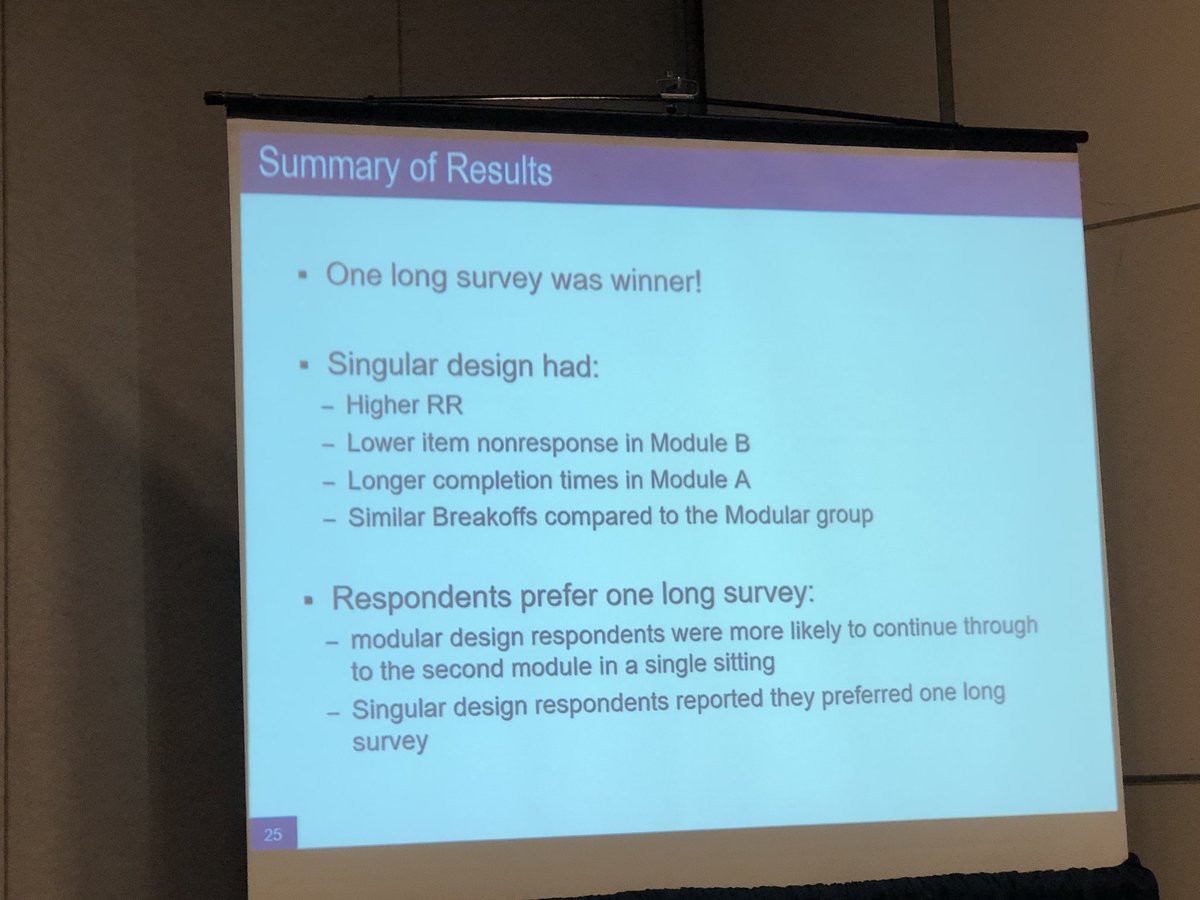#JSM2018 Rebecca Powell from @RTI_Intl talking about an experiment on Add Health shifting from interviewer administered to self administered survey 

#JSM2018 Powell moved to a 55 self-administered survey from 90 minutes interviewer administered. Worried about response burden with this length of self-admin survey. Randomized n=7600 into either full 55 minute survey or 2 modules- one 35 minutes then 20 minutes.
#JSM2018 Powell Could select to continue on the web. In paper, had to first complete module A, then sent module B. Cover letters told about modules in the incentive part, but not up front. $55 incentive total in each condition
#JSM2018 Powell Full mail survey is 60 pages (!!!). They call this the “thud factor “ because the survey thuds on the table when you put it down. Short survey is 30 pages. (Still long!)
#JSM2018 Powell Singular design has higher response rate by end of data collection period 

#JSM2018 Powell Only 6% of respondents did modular survey in two sittings, most did in one sitting (on web)
#JSM2018 powell Breaking web web survey into two modules increased item NR rates, especially for people who did in two sittings. People who did in two sittings took shorter time, not as attentive 



#JSM2018 Powell Break-offs all came from the two sitting group - 14 of 20 breakoffs came from people not returning to survey
#JSM2018 Powell Perception of length - most people prefer one long survey 

#JSM2018 Powell Takeaways- But reminds us that this is a longitudinal Survey with lots of contact over time. 

#JSM2018 Powell Respondents had the mail survey in front of them, so this may have affected decisions to do online in one sitting
#JSM2018 Powell Have mail survey too - look at in future
• • •
Missing some Tweet in this thread? You can try to
force a refresh











